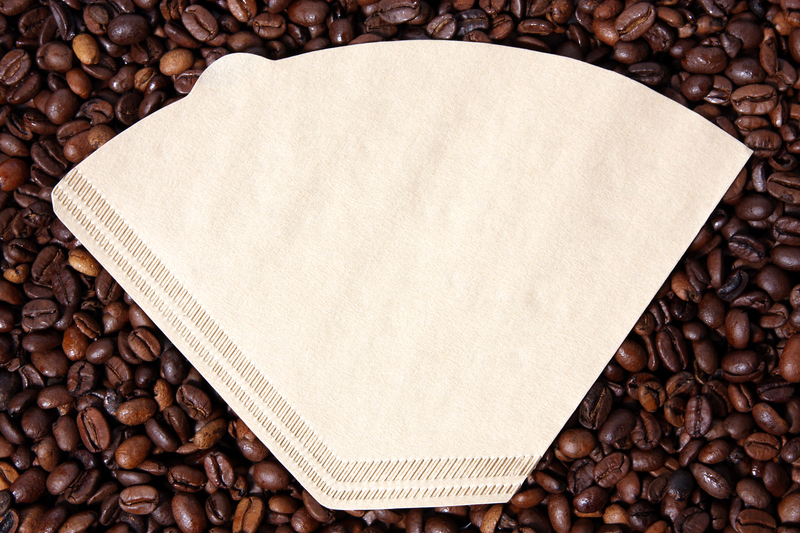Efficient strategies for achieving mould-free window sills
Posted on 01/09/2025
Efficient Strategies for Achieving Mould-Free Window Sills
Maintaining mould-free window sills is essential for sustaining a healthy, attractive, and comfortable home environment. Not only does mould affect the appearance and longevity of your window frames and walls, but it also poses serious health risks, especially for people with allergies or respiratory conditions. In this comprehensive guide, we will explore a wide array of efficient techniques for preventing window sill mould and achieving lasting cleanliness and freshness around your windows.

Understanding the Causes of Mould on Window Sills
Before delving into the best methods for mould prevention, it's important to understand what causes mould to develop on window sills. Several factors contribute to this common household issue:
- Condensation: Moisture from inside the home condenses on cold window glass, often collecting on sills.
- Lack of Ventilation: Poor airflow allows humidity and moisture to accumulate, creating an ideal environment for mould spores.
- Water Leaks: Faulty window seals or leaking walls can allow rainwater to seep onto the sill.
- Poor Insulation: Insufficient insulation leads to temperature differences that facilitate condensation and mould growth.
By recognizing these causes, homeowners can more effectively apply the right mould prevention strategies tailored to their environment.
Top Strategies for Mould-Free Window Sills
1. Boost Ventilation Around Windows
One of the most efficient ways to prevent mould on window sills is to improve the airflow in your home. Adequate ventilation helps reduce humidity and prevents moisture buildup--a key trigger for mould growth.
- Open windows regularly: Allow fresh air to circulate, especially after activities that increase humidity, such as cooking or showering.
- Use exhaust fans: Install and utilize extractor fans in bathrooms and kitchens to direct moist air outside.
- Keep vents unobstructed: Make sure air bricks and trickle vents are not blocked by furniture, dust, or curtains.
- Invest in a dehumidifier: In challenging climates, a dehumidifier can help maintain optimal indoor moisture levels.
2. Insulate for Maximum Efficiency
Proper insulation works wonders in reducing condensation and preventing mould on window sills. By minimizing temperature differences, insulation discourages the formation of damp spots.
- Upgrade to double or triple glazing: Modern windows offer better insulation than single-pane glass, reducing condensation.
- Seal window frames: Use high-quality weatherstripping and sealant to prevent drafts and leaks.
- Add thermal curtains or blinds: These reduce thermal exchange, helping to keep window surfaces warmer and drier.
3. Practice Regular Window Sill Maintenance
Routine cleaning and inspection are crucial in maintaining mould-free window sills. Over time, dust and organic matter can accumulate, providing nutrients for mould spores.
- Wipe down sills weekly: Use a damp cloth and mild detergent to remove dust and moisture.
- Inspect for leaks: Check for evidence of water ingress around the frames and between the joints.
- Clear weep holes: Ensure that drainage holes are not clogged with debris, as they allow moisture to escape.
Tip: Never overlook hidden corners and crevices, as these spots can quietly harbour mould growth.
4. Use Natural and Chemical Mould Inhibitors
Sometimes, prevention alone may not suffice, especially in damp climates. Using natural mould prevention products or gentle chemical solutions can help keep window sills fresh and mould-free.
- White vinegar: An effective, natural antifungal agent. Mix equal parts vinegar and water, spray onto the area, let sit, and then wipe clean.
- Baking soda: Sprinkle on damp sills, then scrub. Baking soda absorbs moisture and neutralizes musty odours.
- Tea tree oil: Add a few drops to water, spray on affected areas, and leave it to dry. This essential oil has strong antifungal properties.
- Anti-mould sprays: For stubborn issues, commercial sprays can eliminate spores. Always follow the manufacturer's guidance and ventilate the space afterward.
5. Repair and Seal Gaps Promptly
Cracks or gaps around window frames enable moisture to seep into the structure, encouraging mould to flourish. Carefully maintaining the integrity of your window sills is a powerful mould-prevention strategy.
- Apply caulk: Reseal any visible cracks with waterproof caulking material to keep out water and air leaks.
- Fix damaged paint or putty: Any peeling paint or crumbling putty should be repaired immediately.
- Keep exterior seals in good condition: Examine exterior joints and seals regularly--especially after storms.
6. Control Indoor Humidity
Mould spores require moisture to survive. Controlling indoor humidity is one of the most effective ways to achieve lasting mould-free window frames and sills.
- Keep indoor humidity between 30%-50%: Measure with a hygrometer and adjust with humidifiers or dehumidifiers as needed.
- Avoid drying clothes indoors: Wet laundry releases significant moisture into the air. Use outdoor lines or vented dryers when possible.
- Properly ventilate during cooking and bathing: Always use extractor fans or open windows to release moisture.
7. Choose Mould-Resistant Materials for Window Sills
If you're upgrading or renovating your windows, consider installing sills made from mould-resistant materials. Certain surfaces are less prone to damp absorption and easier to maintain.
- PVC (uPVC): This modern material is non-porous, making it highly resistant to water and mould.
- Engineered stone: Natural stones like granite or engineered quartz accumulate less moisture and are easy to clean.
- Treated wood: If you prefer the look of timber, select varieties treated with fungicidal preservatives.
How to Remove Existing Mould from Window Sills
In cases where mould is already visible, it's vital to safely remove it using effective window sill mould removal techniques. Here's a step-by-step guide:
- Wear protective gear: Use gloves, goggles, and a mask to avoid inhaling harmful spores.
- Ventilate the room: Open doors and windows for fresh air circulation.
- Prepare a cleaning solution: Use one of the following:
- One part bleach to three parts water
- White vinegar diluted with water
- Commercial anti-mould cleaner
- Apply and scrub: Moisten a cloth or sponge, apply the solution, and gently scrub the affected area.
- Rinse and dry: Thoroughly rinse the sill with clean water and dry with a towel or soft cloth.
- Dispose of cloths safely: Wash cleaning cloths in hot water or discard after use to prevent re-contamination.
Note: If the mould has penetrated beneath the paint or into the wood, or if the affected area is larger than one square meter, consider contacting a professional for thorough removal.
Prevention Tips for Long-Term Mould-Free Protection
Achieving lasting mould-free window sills requires a combination of regular upkeep and environmental control. Keep these tips in mind:
- Monitor humidity continuously: Install a smart hygrometer for real-time feedback and alerts.
- Regularly inspect windows: Check for early signs of condensation, leaks, or mildew.
- Keep window coverings dry: Wet curtains or blinds can trap moisture, so allow them to dry fully between washes.
- Move plants away from sills: Watering plants can increase local humidity. If you love indoor greenery, place trays underneath to catch excess water and avoid growing them directly on window sills.
- Use silica gel packs: Place moisture-absorbing packets in window corners to minimize dampness in problem-prone areas.
When to Seek Professional Help
While most minor mould issues can be managed with diligent care and maintenance, some situations warrant expert advice:
- Extensive mould infestations: When mould covers a sizeable portion of your window area, it may penetrate behind walls and require specialist removal.
- Structural damage: If you notice rotting wood, spongy sills, or damaged plaster, consult a contractor to repair and replace compromised elements.
- Recurring mould: Persistent mould despite best efforts may signal underlying problems such as hidden leaks or foundation issues.

Frequently Asked Questions About Mould-Free Window Sills
How often should I clean my window sills to prevent mould?
*Wipe window sills at least once a week*, especially in damp weather. More frequent cleaning may be required in kitchens, bathrooms, or rooms prone to condensation.
Is vinegar effective for removing mould from window sills?
Yes, vinegar is a natural and efficient solution for mild mould removal. Always ensure you dry the surface thoroughly after cleaning.
Can weather affect the likelihood of mould growth?
Absolutely. Cold or rainy conditions increase condensation, while humid weather triggers higher indoor moisture levels. Adjust your prevention strategies seasonally for best results.
What are some signs I might have a mould issue?
- Musty odour around windows
- Discolouration or black/green spots
- Peeling paint or soft wood
- Persistent condensation
Conclusion: Achieving Lasting Mould-Free Window Sills
Efficient strategies for achieving mould-free window sills revolve around a combination of good ventilation, adequate insulation, diligent maintenance, proper cleaning, and smart material choices. By implementing the techniques covered above--from controlling humidity to repairing leaks and using mould-inhibiting maintenance--you can enjoy spotless, healthy windowsills and safeguard your home's indoor environment.
Regular attention and proactive care not only enhance your home's look but also give you peace of mind, knowing that your living space is free from harmful mould. For persistent or severe mould issues, do not hesitate to consult a professional for a long-lasting and safe solution.
Keep your family healthy and your window sills sparkling by adopting these mould-free window sill practices today!




